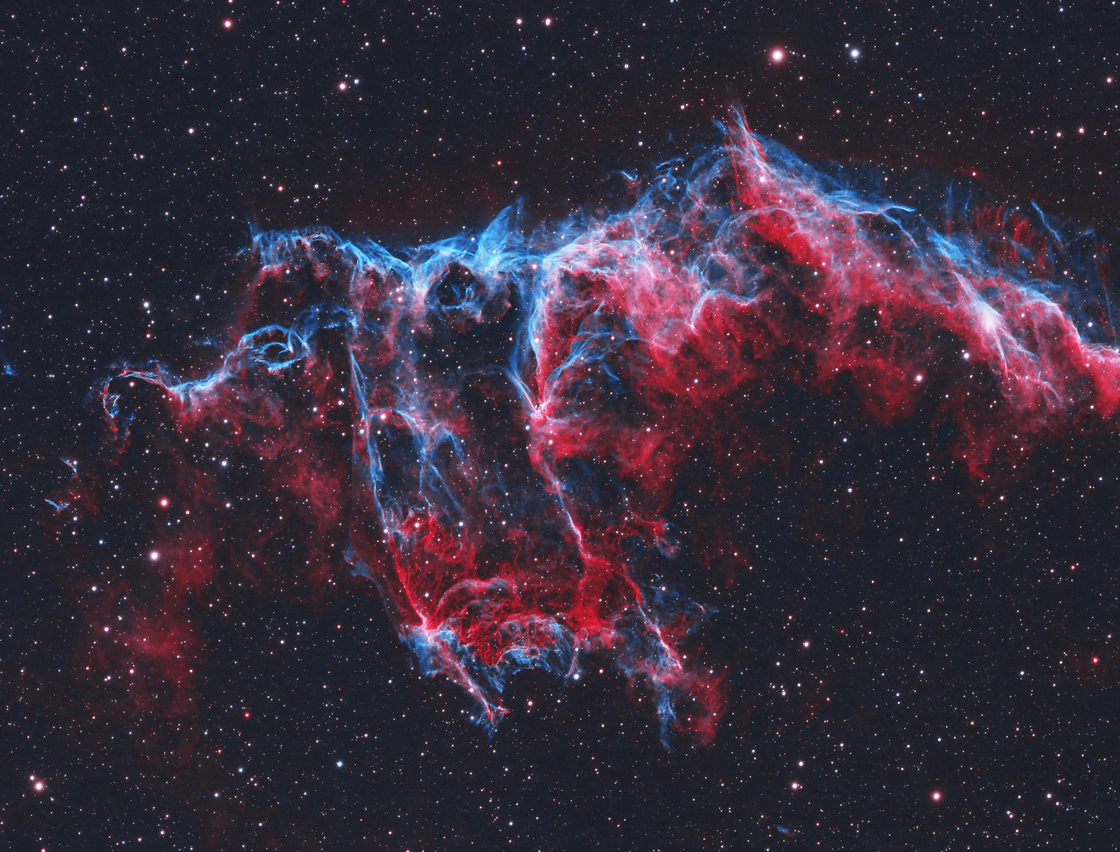NGC 6995, The Bat Nebula
Characteristics:
RA (J2000): 20h 56m 14s
Dec (J2000): +31 degrees 26' 07"
Position Angle: 90 degrees
Description:
The
Bat Nebula (NGC 6995) is located in the eastern portion of the Veil Nebula
Complex. This entire region is created by an expanding
shockwave resulting from a supernova that exploded approximately 8,000
years ago. The shockwave slams into surrounding dust in the
interstellar medium, ionizing gases such as hydrogen, oxygen, and
sulfur, which emit specific wavelengths of radiation during electron
recapture. The above image was taken though two filter, one that
passes radiation from singly ionized hydrogen (HII, Hydrogen Alpha,
656.3 nm, shown in red) and another that passes radiation from doubly
ionized oxygen
(OIII, 496nm and 501nm, shown in blue). The result is a
beautiful, lacelike structure that has fascinated astronomers since its
original discovery in 1784 by William Herschel. The
filamentous structure of the nebula results from the fact that we are
viewing the thin shockwave fronts edge-on.
Photographic
Details:
Dates: August 23,
2023.
Scope: Takahashi
FSQ106 at f5 on the Takahashi NJP
Mount.
Autoguider: ASI178 autoguider with SvBony 30mm guidescope, focal length
120mm.
Camera: ZWO ASI294MM at -10C,
with
7 position ZWO filter wheel. Pixel size is 2.3 microns (Bin 1x1),
yielding an image scale with the FSQ (530mm focal length) of 0.90
"/pixel (well matched for my seeing of 3 arcseconds).
Camera gain set to 50 (e-gain
2.13 electrons/ADU), offset 25.
Read noise at this gain level was 2.18 electrons rms.
Filters: Baader
Ha, OIII filters; 2 inch.
Image acquisition
software: MaximDL for camera control and autoguiding; CCD
Commander for automation.
Exposures: Total
exposure 4 hours (Ha: 2 hours, 300 second subs; OIII 2 hours, 300
second subs).
Processing:
Calibration,
integration, deconvolution (BlurXTerminator), noise reduction
(NoiseXTerminator) in
Pixinsight; subsequent processing in Photoshop.
Please
note: Graphics on this website may not be reproduced without
author permission.
Back to Nebulae
Home



